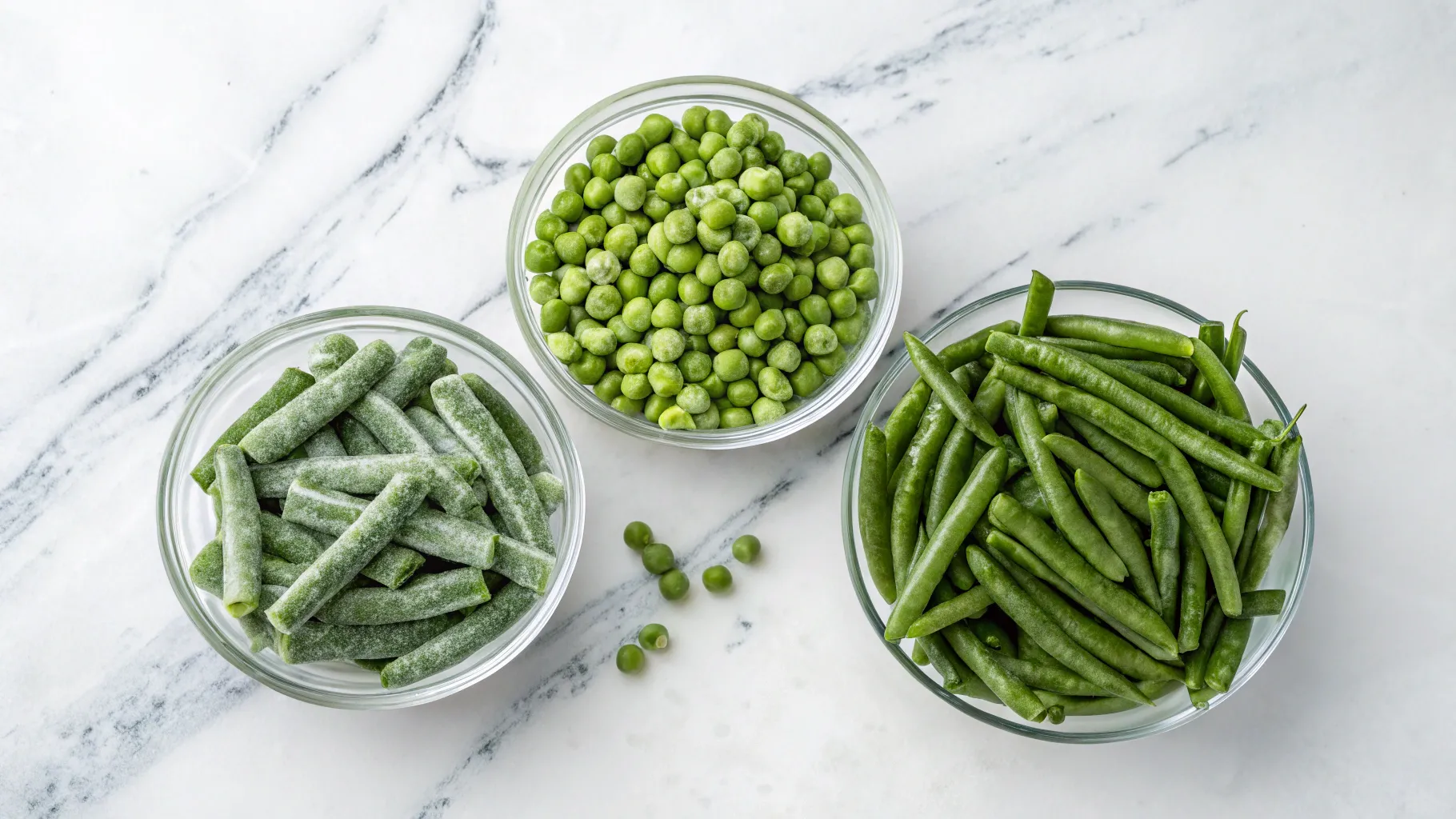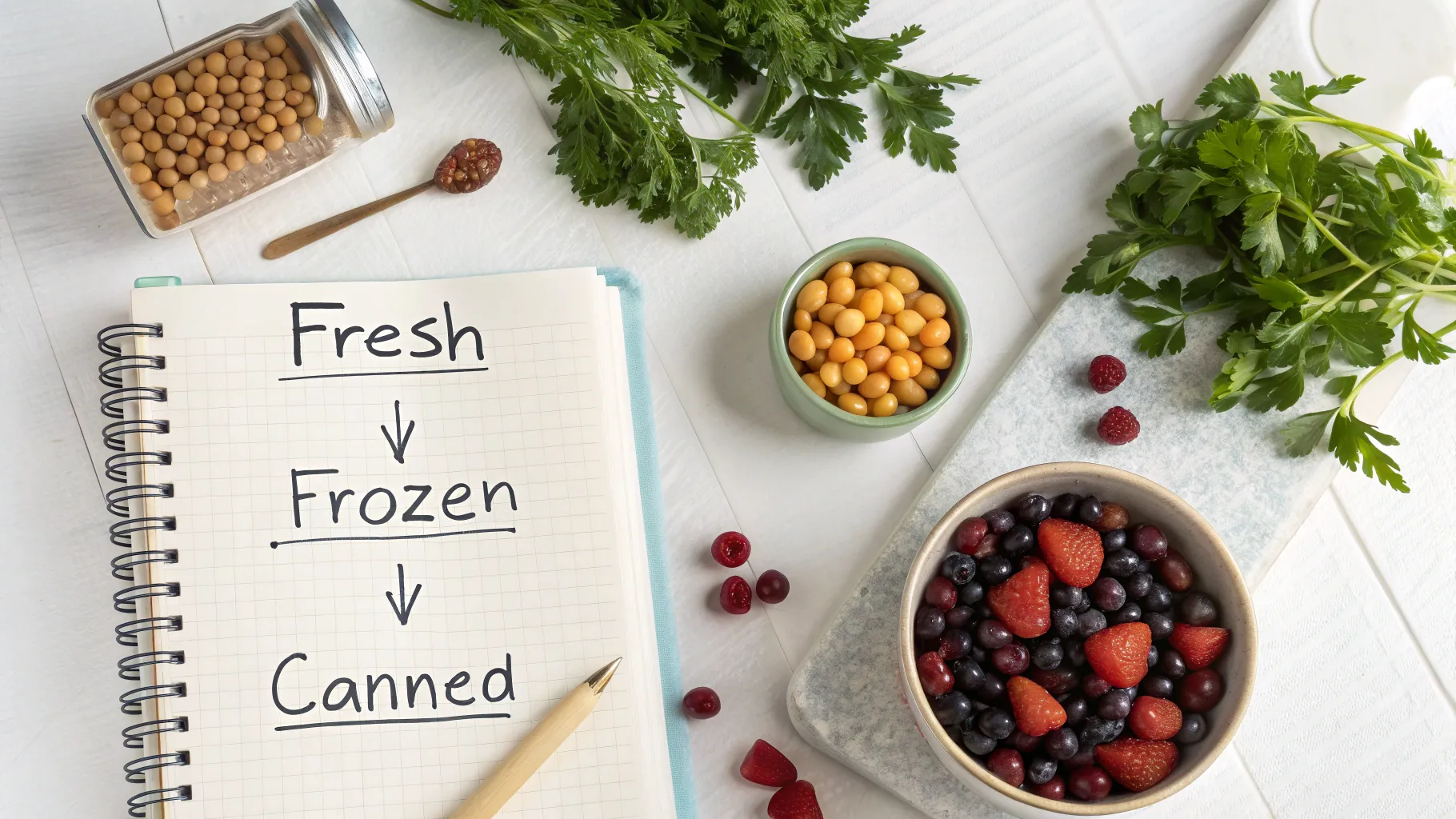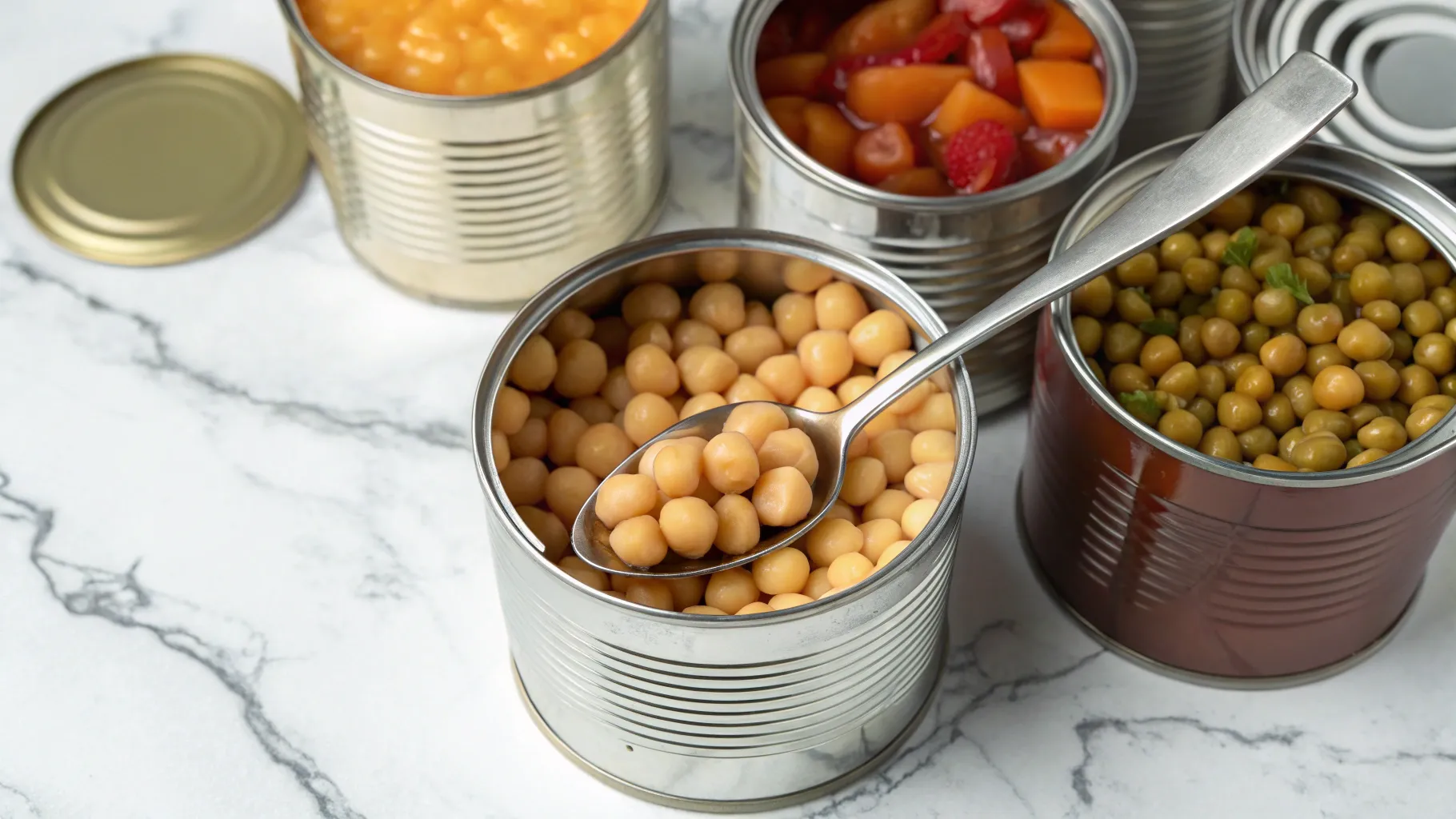Fresh Ingredients: Flavorful and Nutrient-Rich
When it comes to taste, texture, and overall appeal, fresh ingredients are often considered the highest quality choice in cooking. From just-picked herbs and crisp lettuce to ripe tomatoes and tender cuts of meat, fresh foods bring vibrant flavor and visual beauty to any dish. They’re especially ideal when you’re creating meals that are meant to showcase the natural characteristics of the ingredients, making the fresh vs frozen vs canned debate important for home cooks.
Because they haven’t been processed or preserved, fresh items maintain more of their original flavor complexity and color. They’re also typically rich in nutrients, particularly water-soluble vitamins like vitamin C and folate, which highlights why many nutrition experts emphasize the benefits of fresh in the fresh vs frozen vs canned comparison.
Best When:
- You want crisp textures and bright, bold flavors, such as in salads, wraps, raw dishes, or garnishes
- Highlighting the natural taste of ingredients in dishes like grilled vegetables, roasted meats, or fresh fruit desserts
- You have access to seasonal, locally grown produce from farmers’ markets, CSAs, or home gardens
- You’re cooking quickly after shopping, ensuring ingredients are used at peak freshness
Keep in Mind:
- Fresh ingredients have a short shelf life and can spoil quickly, leading to potential food waste
- They often require more prep time, including washing, peeling, chopping, or trimming
- Out-of-season produce can be less flavorful, more expensive, and transported from far away, which may impact both taste and sustainability
Fresh ingredients are perfect when you want your food to shine with color, crunch, and flavor, but they require thoughtful planning and quick use to truly maximize their potential.
💡 Pro tip: Plan your meals around what’s in season to take advantage of peak freshness and lower prices.
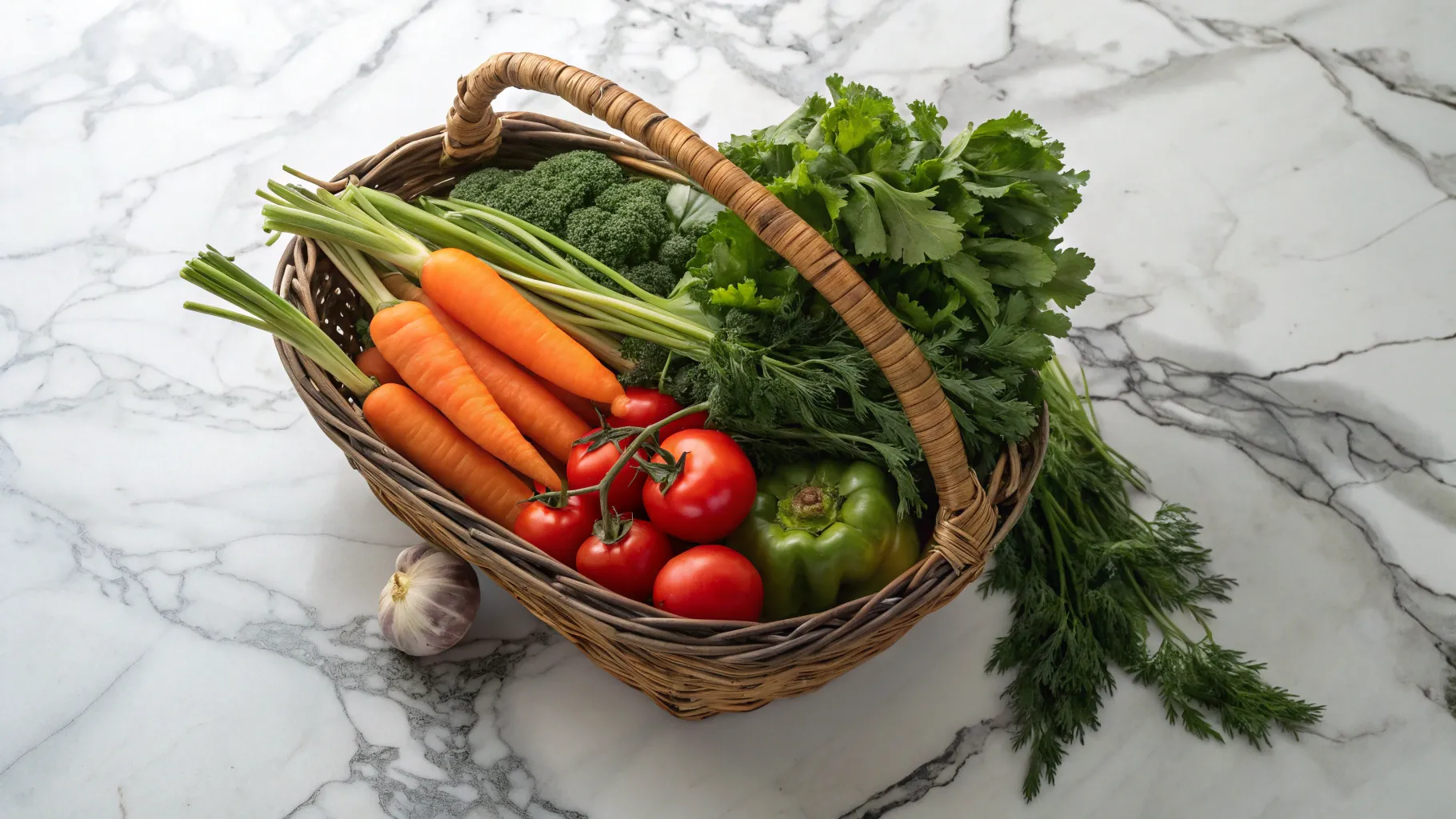
Frozen Ingredients: Convenient and Consistent
Frozen ingredients offer a smart solution for modern home cooks who value both nutrition and convenience. Thanks to advances in freezing technology, most frozen vegetables, fruits, proteins, and even grains are flash-frozen within hours of being harvested or prepared, helping to preserve their nutrients, texture, and flavor, making them an important part of the fresh vs frozen vs canned conversation.
This process locks in freshness at its peak, meaning that frozen foods can sometimes be just as nutritious, if not more, than out-of-season fresh produce that’s been sitting on shelves or transported long distances. Plus, when comparing fresh vs frozen vs canned options, frozen ingredients stand out for their ability to reduce spoilage and food waste while still letting you cook exactly what you need when you need it.
Best When:
- You want to extend shelf life without compromising nutrition, frozen foods can last months in your freezer
- Preparing soups, stews, casseroles, stir-fries, smoothies, or pasta dishes, where texture is less of a concern
- Doing bulk meal prep or freezer-friendly meals for busy weeks or larger households
- Needing consistent availability of out-of-season produce like berries, spinach, or green beans
Keep in Mind:
- Some ingredients, particularly leafy greens and berries, may lose their crispness and become softer when thawed\n
- Always read labels on frozen food blends, some contain added sauces, sodium, or sugar that could affect nutrition and taste\n
- Proper storage and rotation are key to avoiding freezer burn, which can impact quality and flavor over time\n
- Overcrowding your freezer can limit airflow and reduce overall efficiency, so make sure to store items properly and keep things organized
Frozen ingredients strike a perfect balance between practicality and nourishment. With smart choices and proper storage, they can be just as satisfying and healthful as their fresh counterparts, while offering the added benefit of flexibility and less waste.
💡 Pro tip: Stock your freezer with reliable staples like frozen peas, corn, edamame, broccoli florets, mango chunks, and boneless chicken breasts, they’ll save time and add nutritional value to your meals at a moment’s notice.
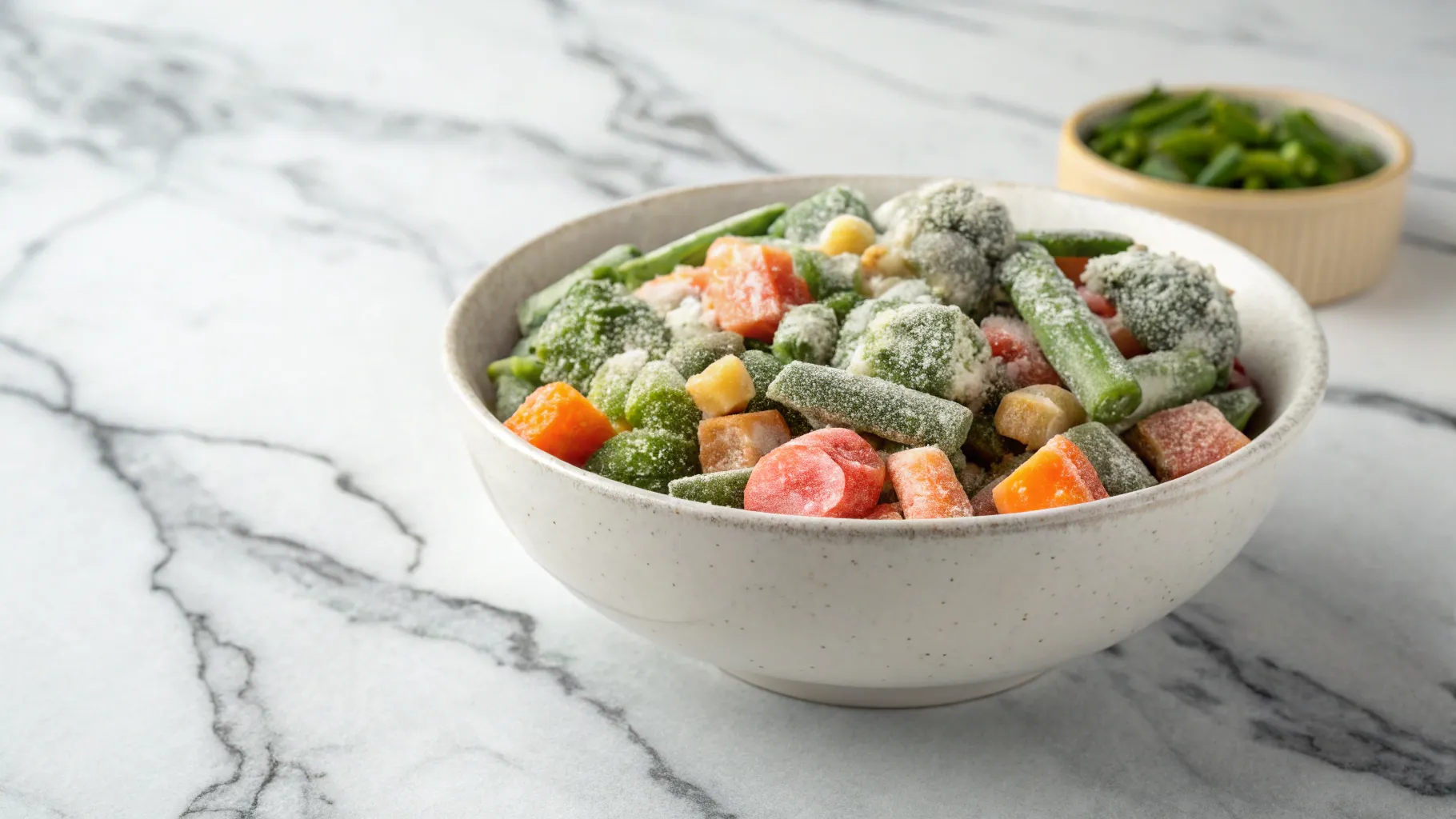
Fresh vs Frozen vs Canned: Side-by-Side Comparison
| Category | Fresh | Frozen | Canned |
|---|---|---|---|
| Flavor | 🌟 Excellent (in-season) | 👍 Good year-round | 👌 Milder, softer texture |
| Nutrition | 🌱 High, but declines over time | 🧊 Locked in at harvest | 🥫 Variable, lower in some vitamins |
| Shelf Life | 🗓️ Short (3–7 days) | ❄️ Long (6–12 months) | 📦 Very long (1–5 years) |
| Prep Time | ⏱️ Higher | ⚡ Quick and easy | ⚡ Very quick, minimal prep |
| Cost | 💰 Higher | 💸 Moderate | 🪙 Most budget-friendly |
| Best Use | Salads, fresh meals, raw dishes | Stir-fries, soups, casseroles | Pantry meals, stews, quick recipes |
How to Mix & Match Ingredient Types
The best meals often use a combination of all three. Here’s how to balance them:
- Use fresh herbs, garlic, and lemon juice to brighten up dishes made with frozen or canned bases.
- Combine frozen vegetables with fresh proteins for stir-fries or grain bowls.
- Pair canned beans or tomatoes with fresh greens for hearty yet balanced meals.
- Save time on busy nights by combining canned lentils with frozen spinach and finishing with a touch of fresh cream or herbs.
Strategic use of ingredients in the fresh vs frozen vs canned spectrum allows you to cook smarter, waste less, and still eat well.
Stocking Your Kitchen Smartly
Keeping a balanced mix of ingredients ensures you’re ready for any recipe:
1. Must-Have Fresh Staples:
- Onions, garlic, carrots, celery
- Seasonal fruits and leafy greens
- Fresh herbs like parsley, cilantro, or basil
2. Freezer Essentials:
- Mixed frozen vegetables
- Berries or mango for smoothies
- Cooked grains or proteins like chicken or shrimp
3. Canned Pantry Basics:
- Beans (black, kidney, chickpeas)
- Diced tomatoes or tomato paste
- Coconut milk, corn, tuna
💡 Pro tip: Rotate your pantry and freezer items regularly to avoid waste.
FAQs: Fresh vs Frozen vs Canned
Q1: Are frozen vegetables as healthy as fresh?
Yes! In many cases, frozen veggies are just as nutritious, sometimes even more so, because they’re flash-frozen right after harvest, locking in nutrients. When comparing fresh vs frozen vs canned, frozen vegetables often retain their vitamins better than out-of-season fresh produce or some canned versions.
Q2: Can I substitute canned tomatoes for fresh?
Absolutely. Canned tomatoes are excellent for sauces, soups, and stews. In the fresh vs frozen vs canned debate, canned tomatoes shine for convenience and flavor depth. Just be aware they may be more acidic and softer than fresh options.
Q3: Is it okay to use frozen fruit in baking?
Yes, frozen fruit works great in muffins, pies, and crumbles. No need to thaw, just add them frozen and adjust cooking time slightly. Within the fresh vs frozen vs canned choices, frozen fruit is especially handy for baking since it holds up well in heat.
Q4: What canned foods are healthiest?
Look for canned beans, tomatoes, and fish packed in water or low-sodium options. In a fresh vs frozen vs canned comparison, canned foods can be highly nutritious if you choose wisely and avoid added sugars, syrups, or creamy sauces.
Q5: Does canned food last forever?
No, but it can last for several years when stored properly. Always check the expiration date and inspect for dents or swelling. In the fresh vs frozen vs canned spectrum, canned foods are the champions of long shelf life, making them ideal for pantry staples and emergency preparedness.
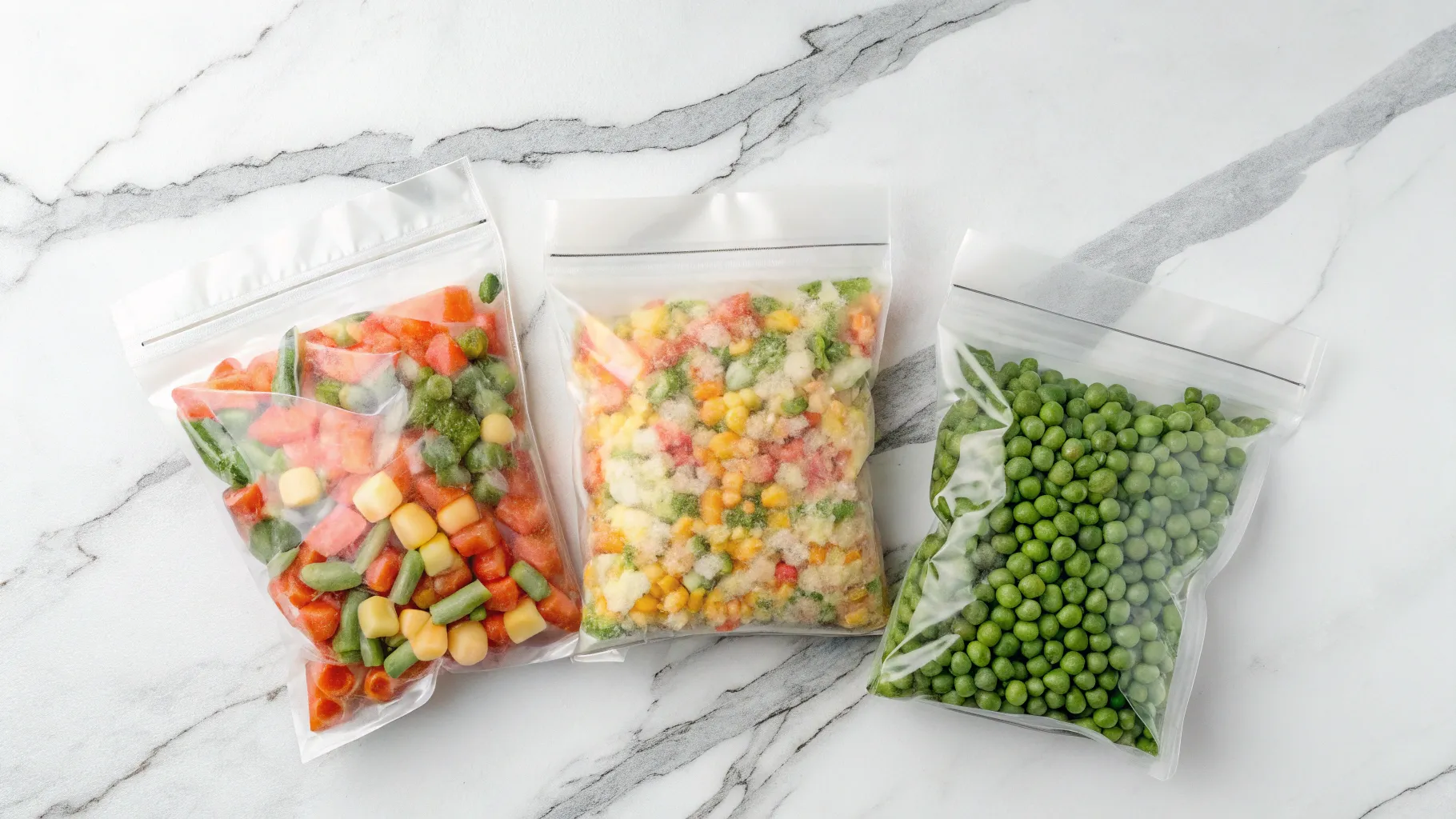
Final Thoughts: Choose What Works for You
There’s no single “best” choice in the fresh vs frozen vs canned debate, it’s all about what works best for your dish, your lifestyle, and your budget.
- Go fresh when texture and presentation matter.
- Use frozen for convenience and long-term planning.
- Stock up on canned goods for affordable, ready-to-use staples.
Mastering the balance of fresh vs frozen vs canned ingredients makes you a more confident, flexible cook. With the right mix, you’ll always have what you need to create flavorful, nourishing meals anytime.
Ready to make the most of every ingredient? Start with what’s in your pantry, freezer, and fridge, and let your creativity do the rest.
💡 Enjoyed this post?
Follow us for daily kitchen tips and tasty inspiration!
📌 Pinterest | 📘 Facebook | 📸 Instagram
